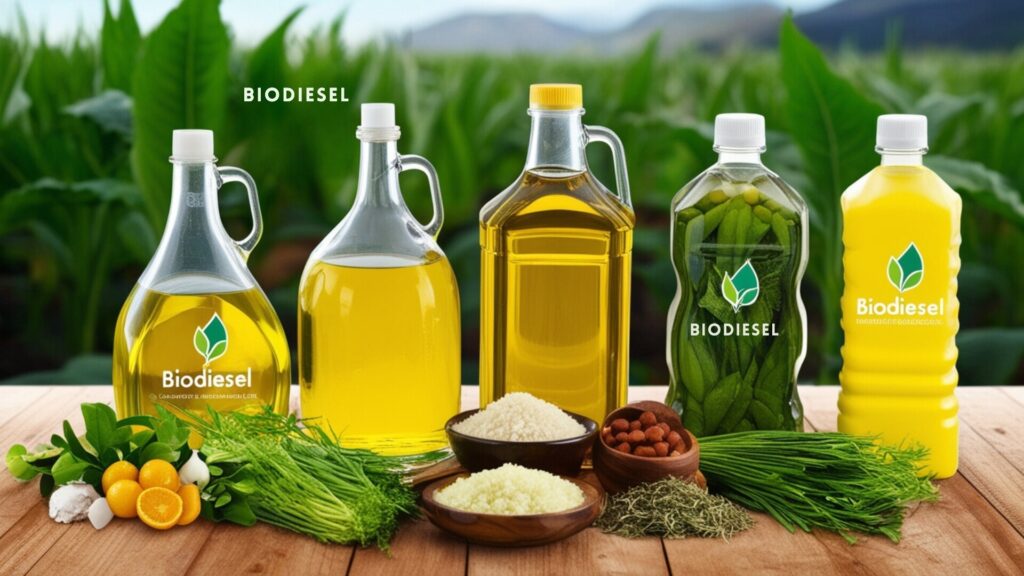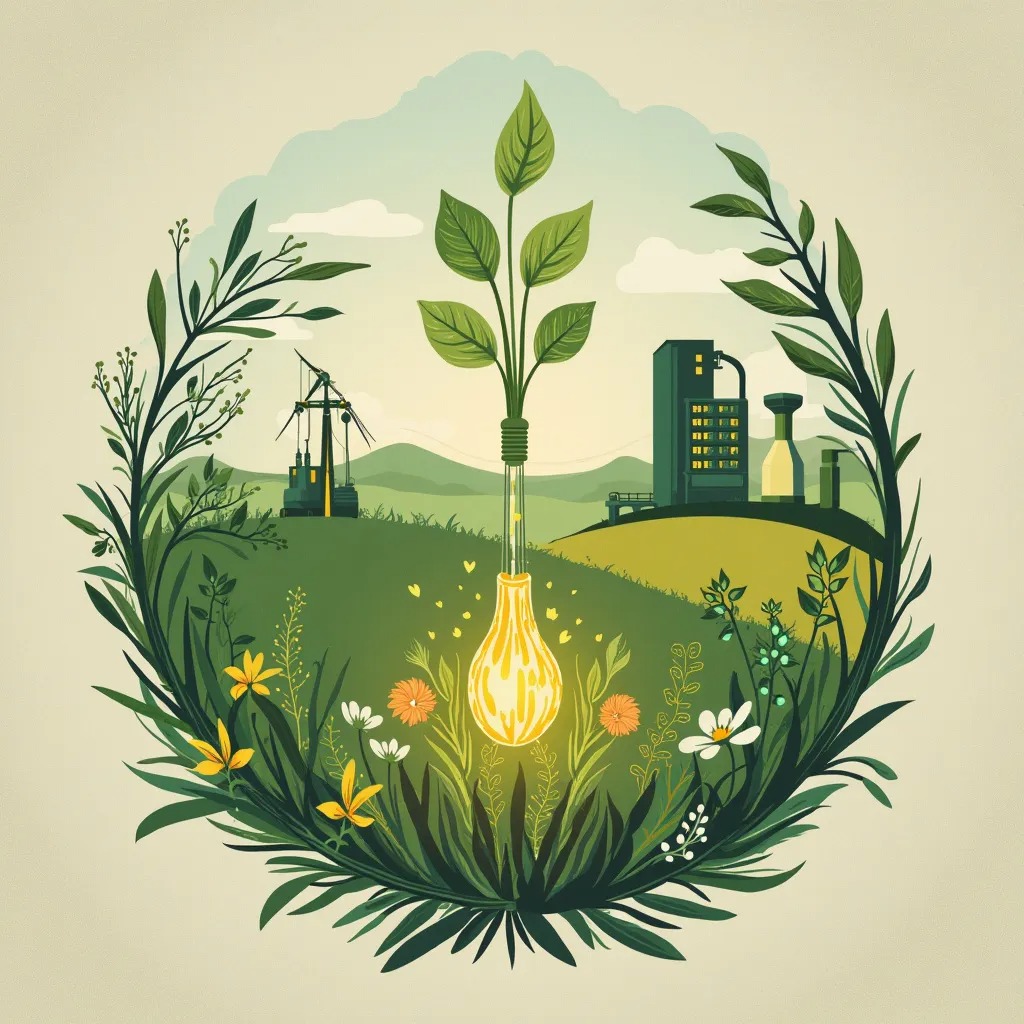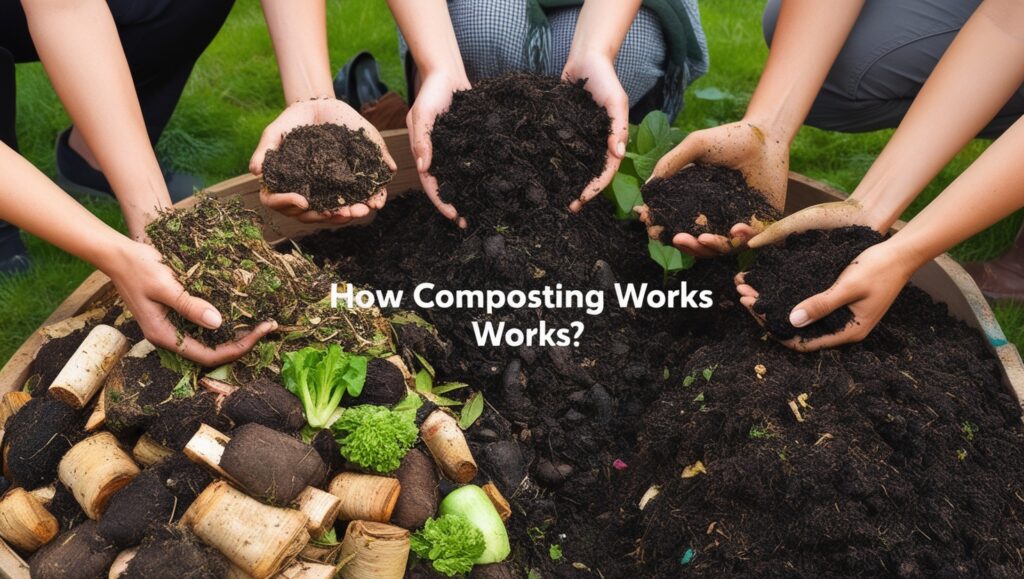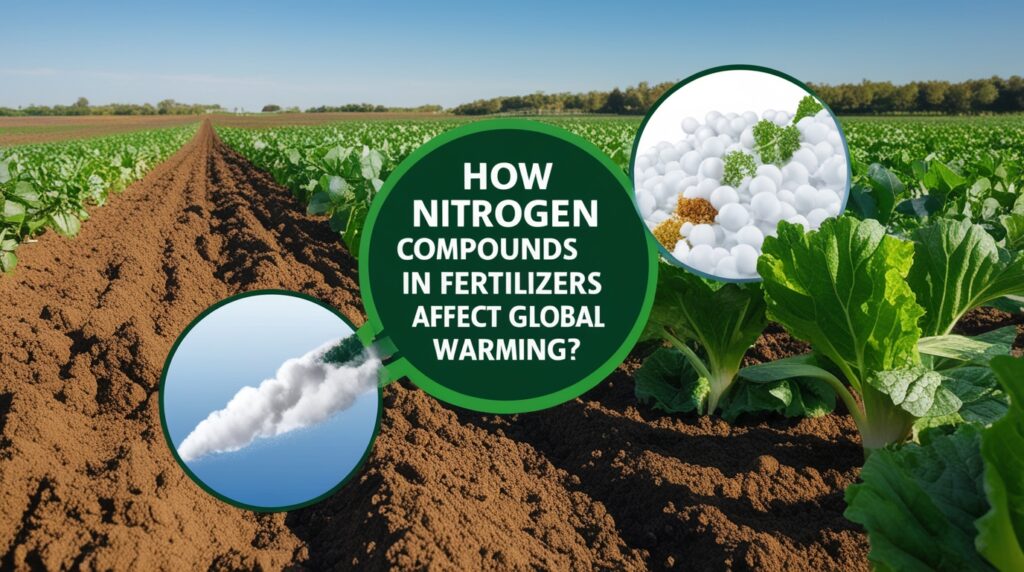
Introduction
Biodiesel is a renewable alternative fuel derived primarily from vegetable oils, animal fats, and recycled cooking grease, designed to replace or supplement traditional petroleum diesel. Its significance has surged in response to increasing fossil fuel depletion and environmental concerns, positioning biodiesel as a crucial component in the global shift towards sustainable energy sources. Notably, biodiesel can reduce greenhouse gas emissions and improve air quality, making it a pivotal player in addressing climate change and energy security.
Biodiesel is categorized into three generations based on its feedstock: first-generation biodiesel is derived from edible oils, second-generation from non-edible oils and waste materials, and third-generation from microbial lipids, particularly microalgae. While first-generation biodiesel has raised ethical concerns regarding food supply and land use, second- and third-generation sources aim to mitigate these issues by utilizing non-food feedstocks and promoting sustainability. The production process involves various methods, including transesterification, which transforms fats and oils into biodiesel through chemical reactions.
Despite its advantages, the biodiesel industry faces several challenges, including economic viability, environmental sustainability, and the food-versus-fuel debate. Critics argue that the reliance on food crops for biofuel can lead to increased food prices and land competition, raising questions about its long-term sustainability and impact on global food security. Moreover, while advancements in technology and feedstock diversification are promising, the economic feasibility of large-scale biodiesel production remains a contentious issue that warrants further exploration and innovation.
As governments worldwide implement policies promoting renewable energy and emissions reductions, the future of biodiesel appears to hold significant potential. However, ongoing scrutiny of its environmental and social impacts necessitates a balanced approach that ensures both economic benefits and sustainability in the biodiesel sector.
Production
Biodiesel production typically involves various feedstocks, catalysis methods, and process designs. The choice of feedstock plays a crucial role in determining the feasibility and cost-effectiveness of biodiesel production. Generally, the reusability of immobilized enzymes and the use of inexpensive biocatalysts, such as soluble or liquid lipases, are significant factors that can make enzymatic processes economically competitive with traditional chemical-catalyzed methods.
Feedstock Types
The alkali-catalytic process using virgin vegetable oil is often preferred due to its lower capital investment. However, this method has high operating costs associated with the requirement for high-quality feedstock. To address this issue, modifications have been made to accommodate low-quality oils, such as waste cooking oil with a high free fatty acid (FFA) content. In this scenario, esterification of FFAs catalyzed by sulfuric acid is performed prior to the alkaline transesterification process. On the other hand, acid-catalyzed processes do not require a pre-treatment step but necessitate larger methanol volumes and specialized stainless steel reactors, resulting in higher overall costs.
Process Design and Simulation
The design of the production process is vital for determining the purity of the final biodiesel product and the efficiency of downstream separation and purification steps. Key considerations include reactor type, catalyst selection, rate of reaction, and operational conditions. Continuous Stirred Tank Reactors (CSTRs) arranged in series are often more effective for mass production than batch processes, which are generally more suited for smaller scale operations. Modeling platforms used in biodiesel production face challenges in integrating various processing units, especially concerning solid-liquid separation and purification. Techniques such as membrane separation can enhance product purity and recover valuable materials like methanol and water. Comprehensive data on process parameters are essential for developing effective flowsheets for production.
Production Capacity and Economic Considerations
Economic sustainability in biodiesel production necessitates strategies that maximize output relative to input costs. The cultivation of microalgae, for example, presents various environmental challenges, including temperature sensitivity and resource constraints. Advances in understanding microalgal biology can inform more effective cultivation systems and help balance economic and environmental sustainability, though the demand for biofuels often competes with food production needs. To further drive the commercialization of biodiesel, substantial technological advancements are required to reduce production costs and improve scalability.
Traditional extraction methods are often energy-intensive and rely on toxic chemicals, prompting a shift towards eco-friendly alternatives like bioleaching, which employs microorganisms to recover metals and minimize environmental impact. In the context of specific countries, initiatives like India’s National Biodiesel Mission emphasize the potential of Jatropha curcas as a biodiesel feedstock. Efficient separation techniques in the transesterification process, where biodiesel and glycerol are distinctly separated based on density, are critical for maximizing yield and quality.

Types of Biodiesel
Biodiesel can be classified into three generations based on the feedstock used for its production.
First-Generation Biodiesel
First-generation biodiesel is produced from edible plant oils, such as palm oil, soybean oil, and coconut oil. These sources are widely accessible and have been the primary materials for biodiesel production, especially in regions where these crops are cultivated extensively. However, the use of edible oils has raised concerns regarding food supply and land use.
Second-Generation Biodiesel
Second-generation biodiesel is derived from non-edible plant oils, such as jatropha, as well as animal fats and waste oils. This generation aims to mitigate the food-versus-fuel debate by utilizing feedstocks that do not compete with food crops. Although this approach is more sustainable, the availability of feedstocks like waste oils and animal fats remains limited, posing challenges for large-scale biodiesel production.
Third-Generation Biodiesel
The most recent innovation in biodiesel production is the third-generation biodiesel, which is derived from microbial lipids, particularly those obtained from microalgae and cyanobacteria. These microorganisms can produce substantial quantities of lipids, with some algal species containing up to 40% lipids by weight, making them a promising alternative for biodiesel production. Furthermore, microalgae have the potential to yield significantly more fuel per unit area compared to traditional plant-based biofuels, with estimates suggesting yields 10 to 100 times greater than conventional crops.
However, the economic viability of large-scale algal biodiesel production is still under investigation due to the complexities associated with cultivation and harvesting. The classification into these three generations highlights the evolution of biodiesel technologies, reflecting an increasing focus on sustainability and efficiency in fuel production.
Environmental Impact
Carbon Emissions and Capture
The production and use of biodiesel significantly influence greenhouse gas (GHG) emissions, necessitating careful management to meet global climate targets. Current projections indicate that the world must limit total carbon emissions to no more than 1,200 gigatonnes by the century’s end, aligning with sustainable practices like Bioenergy with Carbon Capture and Storage (BECCS), which could potentially allow for a total of 2,200 gigatonnes of positive emissions without negative atmospheric effects.
Biodiversity Considerations
Biodiversity, defined as the variety and variability among living organisms, plays a crucial role in maintaining ecosystem functions essential for agriculture and environmental health. The growth of biofuel feedstocks can alter land-use patterns, potentially impacting local biodiversity. Direct land-use changes occur when land is repurposed for biofuel production, while indirect changes may arise from market-mediated effects leading to land being redirected from other uses.
Soil and Water Quality
The environmental sustainability of biodiesel production can be evaluated through various indicators, including soil and water quality. Practices such as residue removal during biomass collection can affect soil carbon storage and increase erosion, highlighting the need for management strategies that mitigate negative impacts on soil health. Furthermore, metrics such as soil bulk density and nutrient turnover are critical for assessing long-term soil quality impacts from biofuel production practices.
Wildlife Impact
The wildlife species at risk from biodiesel-related land use primarily include nesting bird species and other local fauna. However, it is anticipated that significant land-use changes are minimal since much of the landscape is currently used for agriculture and grazing.
Regulatory Considerations
Regulatory assessments, such as those from the EPA, indicate that while the use of renewable fuels like biodiesel can alter emissions, the overall impact on air quality varies regionally. The increase in certain emissions (e.g., nitrogen oxides) must be weighed against decreases in others (e.g., carbon monoxide), which can lead to complex outcomes for public health and environmental quality.
Economic Aspects
Employment Generation
The biodiesel sector, particularly through the production of microalgal biodiesel, has the potential to significantly impact job creation. As interest in biodiesel production from microalgae grows, the expectation is for a substantial increase in employment opportunities. In 2011, the first and second-generation biodiesel production supported approximately 39,027 jobs in the United States, generating over $2.1 billion in household income. These jobs, categorized as ‘Green Jobs,’ align with the definition provided by the United Nations Environmental Programme (UNEP), emphasizing contributions to the preservation and restoration of environmental quality across various sectors, including agriculture and manufacturing.
Economic Sustainability
Achieving economic sustainability in biodiesel production involves balancing cost-effective production strategies with environmental considerations. The focus must be on enhancing the output-to-input ratio while maintaining affordability in market rates. A primary concern is that the drive for economic gains can negatively affect food production and availability, ultimately impacting society at large. Therefore, targeting higher productivity while ensuring environmental sustainability is crucial.
Government Initiatives
Programs like Pathways out of Poverty (POP), initiated by the U.S. government under the American Recovery and Reinvestment Act of 2009, aim to equip individuals living below or near the poverty line with the necessary skills to enter the green job market, particularly in energy efficiency and renewable energy industries. The POP program emphasizes job readiness and basic literacy, while also providing support for childcare and transportation to eliminate employment barriers. Such initiatives are essential for maximizing the socio-economic benefits of the biodiesel industry and facilitating a skilled workforce capable of meeting the demands of a transitioning energy economy.
Uses
Biodiesel has a wide range of applications across various sectors, contributing to energy sustainability and reducing environmental impacts.
Transportation
Biodiesel can be used directly in diesel vehicles, including buses, trucks, and trains. Many countries, such as the UK, USA, and India, have adopted biodiesel for railway operations. For instance, the UK’s first biodiesel train utilized a blend of 80% petro-diesel and 20% biodiesel, while the British royal train completed a journey on 100% biodiesel in 2007. Furthermore, biodiesel is increasingly integrated into public transportation systems as a cleaner alternative to conventional diesel fuels.
Heating
In residential and industrial settings, biodiesel serves as an effective heating oil, with blends like B20 (20% biodiesel) usable without modifications to existing equipment. Higher blends may require adaptations but generally result in reduced emissions of sulfur dioxide and nitrogen oxides, while improving heating efficiency.
Cooking
Biodiesel can also replace kerosene in cooking applications, providing a safer alternative due to its higher flash point compared to traditional fuels used in stoves and lanterns.
Electricity Generation
Biodiesel is utilized in generators, particularly in backup power systems. For example, the University of California, Riverside, installed a 6-megawatt biodiesel-fueled backup generator system that effectively reduces emissions associated with conventional diesel generators. This transition helps mitigate air pollutants like smog and particulate matter, making biodiesel a viable option for emergency power supply.
Alternative Support Mechanisms
In addition to these direct uses, biodiesel plays a role in broader transportation strategies. As part of a holistic approach to energy security, biodiesel is complemented by technologies that promote electric vehicles and natural gas use, helping to diminish reliance on fossil fuels. The maritime industry is also exploring the use of biodiesel as shipping and transportation logistics shift towards more sustainable practices

Regulations and Standards
Overview of Regulatory Framework
The cornerstone of U.S. policy on biofuels is the Renewable Fuel Standard (RFS), established by the Energy Policy Act of 2005 and expanded in 2007 through the Energy Independence and Security Act. The revised standard, known as RFS2, is administered by the Environmental Protection Agency (EPA), which oversees its implementation and enforcement. By 2022, the RFS mandates that 36 billion gallons of renewable fuel be blended into domestic transportation fuels each year, with a certain percentage required to be advanced biofuels that achieve at least a 50% reduction in greenhouse gas (GHG) emissions compared to baseline petroleum emissions.
Sustainability Certification
Sustainability certifications are essential for ensuring that biodiesel production complies with environmental, social, and legal standards. The most recognized regimes for aviation biofuel producers are the Roundtable on Sustainable Biomaterials (RSB) and the International Sustainability & Carbon Certification (ISCC). These certifications focus on key aspects of sustainability, including ecological impacts, social effects, and adherence to legal frameworks, thus supporting global GHG emission-reduction initiatives such as the International Civil Aviation Organization’s Carbon Offsetting and Reduction Scheme for International Aviation (CORSIA).
Canadian Regulations
In Canada, the Clean Fuel Standard regulates emissions from fuels and requires independent, third-party verification of compliance reports submitted by fossil fuel primary suppliers. This standard aims to lower greenhouse gas emissions and provides protocols for generating credits through various projects, ensuring that each project meets specified criteria for GHG reduction.
International and Regional Standards
Other prominent regulatory frameworks include the European Union’s Renewable Energy Directive and the California Low Carbon Fuel Standard. These programs share similar objectives of promoting renewable energy sources while emphasizing sustainability and compliance with local and international laws. The regulatory landscape for biodiesel thus encompasses a variety of standards that are both regionally and globally recognized, reflecting an integrated approach to sustainability in biofuel production.
Challenges and Controversies
Food vs. Fuel Debate
The increasing use of crops for biofuel production has ignited a contentious debate over food security and land usage. In the United States, approximately 40% of corn is utilized for ethanol production, while globally, about 10% of all grain is converted into biofuel. A significant reduction in grain used for biofuels could potentially replace all of Ukraine’s grain exports. This shift raises concerns that farmers may prioritize biofuel crops over food crops, leading to increased food prices driven by supply and demand dynamics. In some regions, the rising costs of vegetable oil are creating hardships, although some farmers and countries have benefited from the higher prices associated with biofuel production.
Production and Economic Viability
The mass application of biodiesel production faces several challenges, particularly concerning the availability and cost-effectiveness of nano-additives and nano-catalysts. While adequate supplies of nano-additives exist for laboratory-scale applications, scaling up to industrial levels poses significant hurdles. The high costs associated with many nano-catalysts can hinder their commercial viability, raising concerns about the overall economic feasibility of biodiesel production at larger scales.
Environmental Impact and Sustainability
While biofuels are often touted as a more sustainable alternative to fossil fuels, their environmental impact is under scrutiny. First-generation biofuels, which dominate the market, have been shown to deliver marginal climate benefits compared to fossil fuels. A 2022 assessment of the US Renewable Fuel Standard indicated that the program may have actually increased greenhouse gas emissions due to the carbon footprint of agricultural practices, including the use of diesel-fuelled machinery and nitrogen-based fertilizers, which are highly potent greenhouse gases.
Social Sustainability
The social dimensions of biodiesel production also present challenges. Implementing certification schemes and regulations aimed at mitigating negative impacts, such as child labor and inadequate compensation for lost land, has seen limited success. Factors such as low social and political participation contribute to this issue, underscoring the need for a more collaborative approach to ensure that social sustainability is achieved alongside economic and environmental goals.
Future of Biodiesel
Market Growth and Demand
The future of biodiesel appears promising, driven by increasing government policies aimed at reducing fossil fuel dependency and addressing climate change. Biodiesel, made from plant oils and animal fats, is projected to experience significant growth due to its renewable nature and lower greenhouse gas emissions compared to traditional diesel fuels. In the U.S., biodiesel is often blended with petroleum diesel in varying ratios, with incentives enhancing its market appeal. By 2022, regulations mandated that 36 billion gallons of renewable fuel, including biodiesel, be blended into domestic transportation fuels each year.
Environmental Considerations
However, the expansion of biodiesel production raises environmental concerns. Increased demand for feedstocks, particularly soybeans and palm oil, has led to land-clearing and intensified agricultural practices, potentially resulting in greater greenhouse gas emissions and biodiversity loss. Therefore, there is an urgent need to adopt sustainable land use practices to mitigate these risks, such as sourcing feedstocks responsibly and utilizing degraded lands for cultivation. Researchers advocate for the cultivation of cover crops that can secure soil health while generating oils for biodiesel production, thus addressing some ecological impacts associated with conventional crop production.
Economic Viability and Innovation
The economic viability of biodiesel production is contingent upon various factors, including capital expenditures, operational costs, and market dynamics. Sensitivity analyses reveal that raw material costs and production capacity significantly influence the overall economics of biodiesel. Continuous innovation in feedstock types, particularly cellulosic and waste-based sources, is essential to enhancing sustainability and reducing competition with food production. Such advancements could help stabilize feedstock prices and ensure a more resilient biodiesel market in the future.
Challenges Ahead
Despite the positive outlook, the biodiesel industry faces challenges, including market entry barriers and the need for efficient integration into existing infrastructures. The transition toward a more sustainable biodiesel market requires profound advances in both practice and policy, emphasizing the importance of research and development in optimizing production techniques and sustainability standards. As the market matures, the collaboration between farmers, agronomists, and policymakers will be vital in navigating these challenges and maximizing the benefits of biodiesel as a renewable energy source.
Related Topics
Introduction
Biodiesel is an alternative fuel derived from renewable resources, primarily from vegetable oils, animal fats, and recycled cooking grease. The global shift towards biodiesel is driven by the dual challenges of fossil fuel depletion and environmental degradation, prompting a search for sustainable fuel alternatives that support energy conservation and environmental preservation.
Implications
The production and utilization of biodiesel have significant implications for both the economy and the environment. The debate surrounding feedstocks for biodiesel production often highlights the tension between economic viability and sustainability. In particular, recent academic interest in using sewage sludge as a feedstock has emerged as a potential solution to address these challenges, warranting further exploration.
Challenges and Future Prospects
Despite its benefits, biodiesel faces challenges, including competition with food production, supply chain logistics, and the need for technological advancements in production processes. The transition towards renewable energy sources like biodiesel can substantially reduce greenhouse gas emissions, conserve finite natural resources, and enhance national energy security. However, as the demand for energy continues to rise due to population growth and industrialization, the sustainability of biodiesel production must be continually assessed.
Regulatory Framework
The regulatory landscape surrounding biodiesel is shaped by initiatives like the Renewable Fuel Standard (RFS) Program in the United States, which mandates the blending of renewable fuels with traditional fuels. This framework aims to bolster the biodiesel industry while ensuring that the fuels meet specific greenhouse gas emissions reduction criteria. Moreover, economic incentives provided by various governmental policies promote research and development in biofuel technologies.
Environmental Sustainability
Biodiesel’s role in promoting environmental sustainability cannot be overstated. It has the potential to mitigate climate change impacts, improve air quality, and contribute to biodiversity conservation through responsible sourcing and production practices. The collaborative efforts of governments, Indigenous peoples, and private sectors are critical in fostering sustainable practices within the biodiesel industry.



